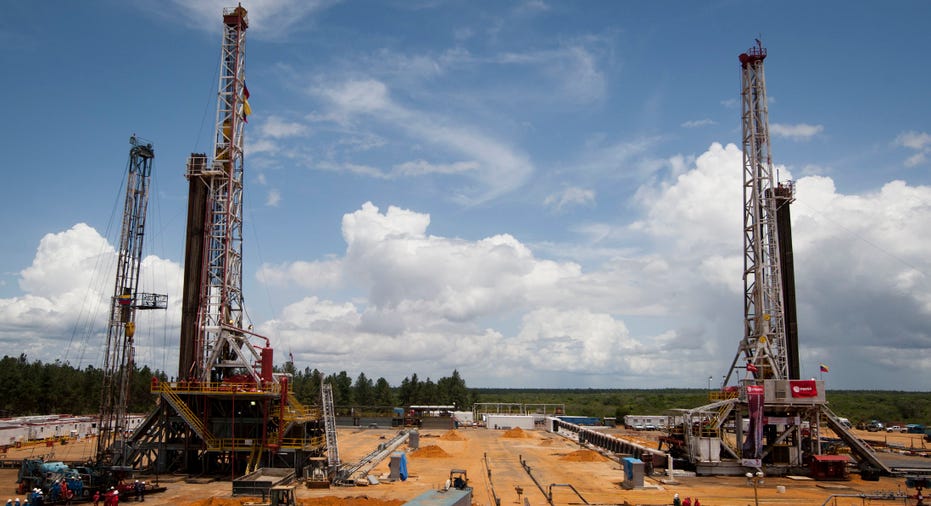Why OPEC, Led by Saudi Arabia, Is Trying to Crash the Oil Market

Oil tried to rally Thursday, only to fall in the face of weakling demand expectations and reports of Ebola in New York City.
The market seemed to rally after a misinterpreted report on Saudi oil production. While the report suggested that Saudi exports had slowed, production actually went up. The Saudis actually supplied 9.36 million barrels of oil which was 328,000 lower than the previous month. Yet production actually went up by 100,000 barrels. The reduction in exports was really a bearish sign as the demand for Saudi oil is obviously faltering. Some of that can be directly related to refinery maintence planned and unplanned, but also due to a shaky economic outlook.
Oil also had to ponder a hit to longer term demand expectations, as EU leaders in Brussels plan to cut greenhouse gas emissions by 40% by 2030, compared with 1990 levels with 27% of that to come from renewable fuels. As the world tries to wean itself off of oil, producers will try to maneuver to maintain market share. This is another reason that OPEC led by Saudi Arabia is trying to crash the oil market in an attempt to put off any new shale projects that are the biggest threat to their long term economic health. OPEC is also feeling the heat from Russian production that hit 10.61 million barrels a day, a post-Soviet era high last month.
The natural gas injection number fell short of expectations, but still had an above average injection. The Energy Information Administration showed that working gas in storage was up 94bcf to 3,393 Bcf. Warm weather forecasts in the Midwest are hoping in the next week they can build more inventory where stocks are still 9% below the five year average. Still, this is the season when you should be looking at calls going into winter. Longer term, the Wall Street Journal points out that “Next year will see a swath of coal-fired power plants shut down as a result of tighter environmental standards. Some 30 gigawatts of coal-fired capacity is slated to be retired or at risk of this in 2015, according to Sanford C. Bernstein.
That is 60% of the amount expected to close through 2020, still this year with the record production and cool summer it may take a polar vortex to get a spike.
Friday Commodity wrap: Beans and the grain markets have come back from the dead. Late harvest a scattered report of yield that has not quite lived up to billing is giving the complex a boost. Dry weather in Brazil helped soybeans and have led the grain comeback as exports stayed strong in the face of a rising dollar, yet we are seeing strength in corn as well. Oats are also on a tear as fears that a cold winter may restrict rail space to move oats in a couple of months.
Beans are so hot that someone may be selling hot beans. It was reported someone stole about $18,000 worth of beans from a farm in Illinois that was owned by an Iowa farmer.
Cattle prices rallied ahead of what could be a make or break cattle on feed report today, which is expected to show that September placements were slightly larger than last year.
The Price Links Video series gives insight across the financial spectrum. https://www.youtube.com/playlist?list=PLDq9JQANqxRxCBaHqunzBT4Frxitjw-XV
Past results are not necessarily indicative of future results. Investing in futures can involve substantial risk of loss & is not suitable for everyone. Trading foreign exchange also involves a high degree of risk. The leverage created by trading on margin can work against you as well as for you, and losses can exceed your entire investment. Before opening an account and trading, you should seek advice from your advisors as appropriate to ensure that you understand the risks and can withstand the losses.
The information and data in this report were obtained from sources considered reliable. Their accuracy or completeness is not guaranteed and the giving of the same is not to be deemed as an offer or solicitation on our part with respect to the sale or purchase of any securities or futures. The Price Futures Group, its officers, directors, employees, and brokers may in the normal course of business have positions, which may or may not agree with the opinions expressed in this report. Any decision to purchase or sell as a result of the opinions expressed in this report will be the full responsibility of the person authorizing such transaction. Reproduction and/or distribution of any portion of this report are strictly prohibited without the written permission of the author. Trading in futures contracts, options on futures contracts, and forward contracts is not suitable for all investors and involves substantial risks.